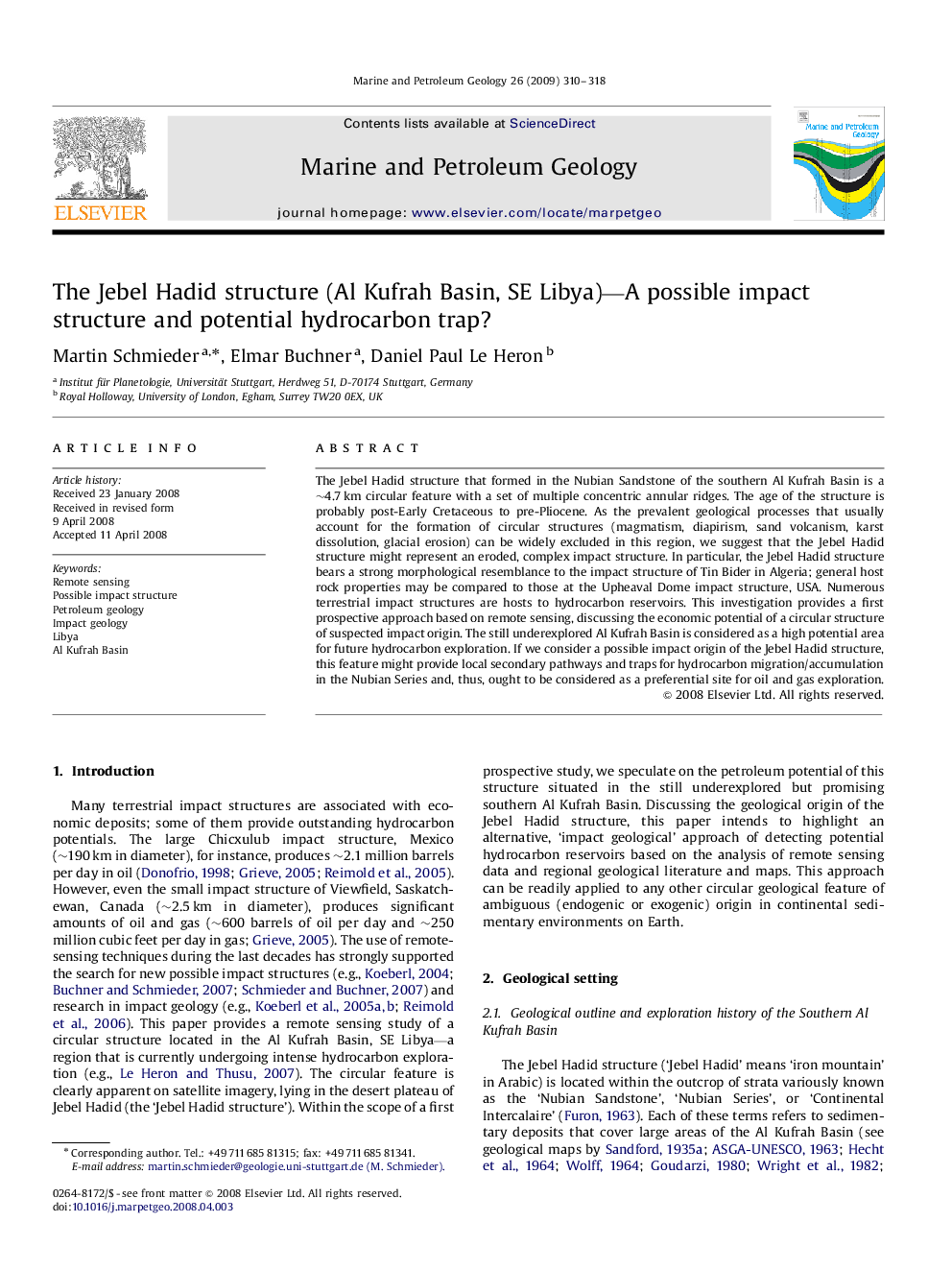| Article ID | Journal | Published Year | Pages | File Type |
|---|---|---|---|---|
| 4696372 | Marine and Petroleum Geology | 2009 | 9 Pages |
The Jebel Hadid structure that formed in the Nubian Sandstone of the southern Al Kufrah Basin is a ∼4.7 km circular feature with a set of multiple concentric annular ridges. The age of the structure is probably post-Early Cretaceous to pre-Pliocene. As the prevalent geological processes that usually account for the formation of circular structures (magmatism, diapirism, sand volcanism, karst dissolution, glacial erosion) can be widely excluded in this region, we suggest that the Jebel Hadid structure might represent an eroded, complex impact structure. In particular, the Jebel Hadid structure bears a strong morphological resemblance to the impact structure of Tin Bider in Algeria; general host rock properties may be compared to those at the Upheaval Dome impact structure, USA. Numerous terrestrial impact structures are hosts to hydrocarbon reservoirs. This investigation provides a first prospective approach based on remote sensing, discussing the economic potential of a circular structure of suspected impact origin. The still underexplored Al Kufrah Basin is considered as a high potential area for future hydrocarbon exploration. If we consider a possible impact origin of the Jebel Hadid structure, this feature might provide local secondary pathways and traps for hydrocarbon migration/accumulation in the Nubian Series and, thus, ought to be considered as a preferential site for oil and gas exploration.
